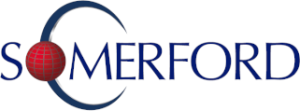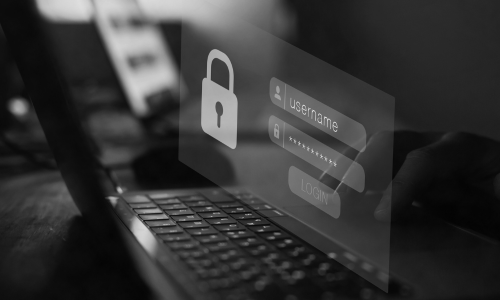
Delinea & Splunk: A Cybersecurity Power Duo
Author: Josh Gonasella-Brown
Release Date: 31/07/2025
Cybersecurity is no easy task. Between external threats, insider risks, and ever-evolving compliance regulations, IT teams must constantly stay ahead of the game. That’s where Delinea and Splunk come in. Individually, they offer powerful security solutions. Together, they create a seamless, intelligent defense system that enhances visibility, security, and efficiency - like a well-oiled security machine, minus the actual oil.
Understanding Delinea & Splunk
Delinea: The Gatekeeper of Privileged Access
Delinea (formerly Thycotic and Centrify) specialises in privileged access management (PAM) - ensuring that only authorised users gain access to critical systems. Because, let’s be honest, not everyone in the company needs admin privileges (looking at you, Steve from accounting). Key benefits include:
• Enforcing Least Privilege – Users get only the access they need—nothing more, nothing less
• Session Monitoring & Auditing – Keeps an eye on privileged activities - trust is good, but verification is better
• Secure Credential Vaulting – No more passwords on sticky notes or spreadsheets named "passwords_final_revised_v2.xlsx."
• Just-in-Time Access – Grants temporary privileged access when necessary, then revokes it like a bouncer at an exclusive club.
• Compliance Support – Helps organisations stay compliant with regulations like PCI DSS, HIPAA, and SOX—because no one enjoys a surprise audit.
Splunk: The Sherlock Holmes of Cybersecurity
Splunk is a SIEM (Security Information and Event Management) solution that processes and analyses vast amounts of security data, turning chaos into clarity.
Here’s why it’s a game-changer:
• Real-Time Threat Detection – Identifies security issues before they become front-page news.
• Comprehensive Log Management – Centralises logs from multiple sources, so you don’t have to play detective with scattered data.
• Automated Incident Response – Responds to threats without human intervention, because sleep is important.
• Advanced Security Analytics – Spots patterns that could indicate vulnerabilities or threats, giving you a heads-up before disaster strikes.
• Seamless Integration – Works across cloud, hybrid, and on-premises environments, because cybersecurity knows no boundaries.
How Does It Work?
Integrating Delinea and Splunk isn’t just about plugging them in and hoping for the best - it’s a strategic process that enhances security through automation and intelligence.
Here’s how they work together:
1) Data Collection & Integration – Delinea logs privileged access activity, such as login attempts, privilege escalations, and session details. This data is then fed into Splunk for real-time analysis.
2) Event Correlation & Analysis – Splunk correlates privileged access data with other security logs to identify patterns, anomalies, and potential threats.
3) Automated Threat Detection – If Splunk detects unusual behavior (e.g., an admin logging in at 3 AM from an unknown location), it triggers an alert.
4) Incident Response & Mitigation – Based on preconfigured security workflows, Splunk can trigger automated responses such as revoking access, resetting credentials, or notifying security teams.
5) Continuous Monitoring & Reporting – Both solutions provide dashboards and reports that help security teams track privileged access activity, compliance status, and security incidents in real time
Why Deploy Delinea & Splunk Together?
While Delinea and Splunk shine on their own, integrating them creates a proactive, automated security powerhouse.
Here’s how they make each other even better:
1. Enhanced Threat Detection with Privileged Access Insights
Delinea’s privileged access data integrates into Splunk, giving security teams real-time insights into high-risk activities.
This means faster detection of:
• Unusual login patterns (why is someone accessing the system from Antarctica?)
• Repeated failed login attempts (either someone forgot their password, or an attack is underway)
• Unauthorised privilege escalations (because Bob in Marketing definitely shouldn’t have admin rights)
By correlating privileged access data with broader security logs, Splunk provides greater context and visibility into potential risks before they become full-blown crises.
2. Automated Security Response for Faster Mitigation
By integrating Delinea with Splunk, organisations can automate security responses, including:
• Terminating suspicious sessions before they escalate
• Auto-resetting compromised credentials before attackers can cause damage
• Triggering investigations and alerts when unusual behaviour is detected
This means security teams can respond instantly instead of scrambling after the fact.
3. Strengthening Compliance & Audit Readiness
Compliance can feel like a never-ending checklist, but Delinea and Splunk make it easier by:
• Providing real-time compliance dashboards (so you don’t have to scramble before an audit)
• Automating privileged access audits, eliminating the need for endless manual reports
• Maintaining centralised log trails, ensuring every action is tracked and easily accessible
4. Reducing Alert Fatigue & Improving Productivity
Security teams are drowning in alerts. By integrating Delinea and Splunk, organisations can:
• Filter and prioritise alerts based on real threats (not just background noise)
• Provide context to security events, helping teams respond more effectively
• Automate low-priority incidents, freeing up time for actual security challenges.
Final Thoughts: A Smarter Security Strategy
Cybersecurity isn’t about reacting to threats - it’s about staying ahead of them. By combining Delinea’s privileged access security with Splunk’s advanced analytics, organisations create a security solution that enhances visibility, accelerates response times, and simplifies compliance. For businesses serious about security, deploying Delinea and Splunk together isn’t just a smart move - it’s a necessity. Because when it comes to cybersecurity, it’s always better to prevent the fire than to put it out.

